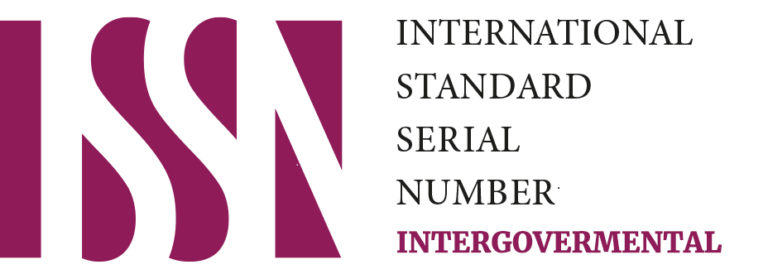ABSTRACT
It is an explicit reality that the essence of embassies in diplomatic relations is invaluable. Embassies play a significant role as contact points between their states and host nations. The activities of the Foreign Affairs Office are achieved through the diplomatic functions of an ambassador who heads an embassy together with the staff of the different sections in the foreign mission. The role of disguised embassies makes up for the vacuum created when embassies cannot function due to lack of recognition by another country. Though diplomatic activities may not be openly transactional in a disguised embassy as in a regular flag-flying embassy, nevertheless, communications, possible initiations, and the ability to sustain interactions and relationships can occur via this means.
INTRODUCTION
Diplomatic relations continue to be the binding force between nations both at bilateral and multilateral levels. These relationships allow states to support each other as they uphold the interests and needs of all parties. The member states usually develop confidence in the group’s collaboration as they share and work to resolve the challenges faced by any nation among them. In this regard, the developing countries often look up to the more developed government’s support. Sometimes, the bigger states also need help from the smaller ones, especially when they benefit from their resources.
The most common means of succeeding in building solid diplomacy is through communication. This is uncomplicated when parties are open and receptive to each other and are ready to proceed in a diplomatic relationship. However,without communication, this is difficult. Interactions can be challenging because of the lack of recognition of each other and possible intentions. Even the existing relationships can be distorted when there is no right or proper communication among parties.
To have strong diplomatic relations and adequate means of interacting with each other, embassies play an essential role in ensuring that these goals are achieved. The activities of an ambassador and all foreign policy officials and diplomats working in the embassy to protect their states’ interests become paramount.
Unfortunately, these relationships sometimes cease to exist, notably when governments decide to sever their ties in protest against some policies in countries with whom they disagree. Predictably, severance affects all forms of interactions. In such situations, disguised embassies come into play as they take the responsibility of sustaining communication between the nations so that diplomatic affairs can continue even though not in the expected regular manner.
My main paper aims at discussing the roles of disguised embassies in diplomatic relations. I will first state the nature of the study’s problem and give a brief historical background of how the use of embassies started. Then, I will discuss regular embassies and diplomatic relations. Following that, I will reflect on disguised embassies and their roles in diplomacy. After, I will evaluate my discussion before I offer my conclusion.
STATEMENT OF PROBLEM
One of the skills used in the management of international relations is diplomacy. It is an activity that is well-resourced and a significant ingredient of power. Primarily, it allows states to secure their foreign policy objectives without resorting to the use of force. Those in authority can communicate and promote their national interests and foreign policies through formal agreements or tacit accommodations.
Success of relationships between nations depends on the international activities taking place in the embassies. Here, diplomatic duties that strengthen bilateral relations and policies on security, economy, agriculture, and peace are dealt with by Foreign Service diplomats and specialists on behalf of their countries. All the events taking place in the embassy through the different departments are headed and coordinated by an ambassador. It is this ambassador who makes sure that a cordial relationship exists between the home state and the host nation.
The absence of this relationship creates a vacuum in international relations, which makes regular interactions nearly impossible. When a host nation severs its relations with a state, it means the host ceases to recognize the existence of the foreign nation embassy in its country, thereby eliminating any formal diplomatic relation transacted through said embassy.
In this nature, the only alternative for interactions is through an indirect means using disguised embassies. These are referred to as irregular embassies because they conduct their diplomatic relations with host nations under the cover of other institutions in the host nations. Knowing how important communication is in international relations, it seems obligatory to understand the role of disguised embassies in sustaining and/or re-establishing relationships among countries.
HISTORICAL BACKGROUND
Diplomatic relations have been in existence for a long time. This can be noticed in nations’ and leaders’ efforts as they seek to have self-identity. In some cases, this has led to the domination of other states in their territory. One reason for the aggressive efforts by other nations to expand their territory was fear of the surrounding countries. There is a continuous presumption that the more powerful a nation is, the more dominant it becomes over those in its surroundings. The expansionist method was more of the survival of the fittest ideology and led to conflict. After the Peace of Westphalia, however, permanent diplomatic representatives in Europe, who had the right to send and receive embassaries, tested the theory of sovereignty.
Yet, a better way of achieving a common purpose among nations, which also reduced fear, was the formation of alliances. This was noticed between Britain and the United States in protecting the Persian Gulf. The coalition helped build a balance of power and led the League of Nations to be treated with respect. It aimed at developing trust and relationships so as to have peace among states. Unfortunately, alliances can collapse when states see each other as irrelevant or a threat to their security. This can lead to the end of a coalition between the formerly amicable countries. For example, when there is a regime change and the in-coming leaders’ world views differ, it can be challenging to maintain a steady alliance.
A more cordial form of relationship between nations came to exist through the use of embassies. The existence of resident embassies was said to have begun in the second half of the fifteenth century when nations started replacing or supplementing the nuncius and plenipotentiaries, the diplomatic representatives who were the usual authorities making decisions on behalf of their government. Before this time, temporary embassies were used in building and advancing relationships between countries but were expensive to dispatch and keep safe along the way. Travelers were vulnerable to road hazards and were likely to cause trouble over procedures and ceremonials because of their leaders’ high status. Thus, establishment of resident embassies ensued.
With this system, permanent residence, and the increase in Europe’s diplomatic activities, it became necessary to have an ambassador in charge of the resident mission and remain in one place where he could frequent a court, making diplomatic encounters easier. It is worth noting that the establishment of resident embassies helped build familiarity between governments, which, in turn, produced better communication and interactions overall. Moreover, it allowed for the opportunity to negotiate without drawing attention, as was frequently the case with special envoys.
In the earlier stage, when temporary diplomatic representatives were in use before establishing the permanent residence, Latin was the common language used in diplomatic relations. But when the new policy replaced the old system of international relations, the French language replaced Latin as a diplomatic language. Harold Nicolson called it the French diplomacy system’s embassy development because the French had a dominant influence on its evolution.
Due to development and globalization taking place today, technology has given a new face to the nature of relationships between nations and their leaders. It has brought about expansion in diplomatic affairs, especially with the ease in communications and transportations systems. This has affected the traditional embassy system with new approaches to international relations taking the form of summit diplomacy, ministerial or departmental diplomacy, and representative diplomacy – even among organizations. Regardless, the significance of the embassy cannot be overlooked due to its importance in international matters.
EMBASSIES AND DIPLOMACY
Embassies are essential factors in diplomatic relations between countries. They make interactions much easier for their home states, principally regarding foreign service activities with their resident nations, hence making their presence felt at an official level.
An embassy is always located in the resident nation capital city as it represents the government in foreign affairs and facilitates interaction between all stakeholders. Location differentiates the embassy from other governments’ structures, such as the consulates, that can be found in any city other than the capital in the host countries. Nevertheless, all the structures of an embassy are under the responsibility of an ambassador who is appointed by the nation’s leader to represent his/her nation.
An embassy consists of different agencies that run the administrative functions of Foreign Services. The United States, for example, has the Department of States, the Agency for International Development, the Foreign Commercial Services, the Foreign Agricultural Service, and the International Broadcasting Bureau. Other departments include Defense, Central Intelligence Agency, Drug Enforcement, Treasury, and Homeland Security. All make up the United States missions in foreign countries.
These offices are under the leadership of the ambassador extraordinary or plenipotentiary, which is the diplomatic title that conveys the host nation’s responsibility. The ambassador, also called the chief of mission, is the person in charge, the team leader, who leads all State Department sections in the embassy.
The value of having these different departments, each with its chief in the embassy, helps make expedient decisions and coordinate activities. This assists in the smooth running of foreign affairs under the director of mission, who collaborates with all the section heads.
All administrative and diplomatic relations on behalf of the home government are directed from the embassy through its leadership in the host nation. The central focus is to represent one’s home government, compile and report data, submit information, foster negotiations, and strengthen bilateral relations. Every work carried out in an embassy is for the particular interest of its government.
Based on the different departments found in an embassy, a variety of people who are not actually trained diplomats are seen working in all the sections. Some staff are also employed from the country of residence, which can create goodwill between states. On the other hand, a fair number of trained diplomats occupy significant positions in the embassy since they are qualified for such purposes.
These latter-mentioned diplomats are schooled to communicate in a certain way before they are assigned to their primary posts. For example, everyone representing his/her home nation speaks inclusively using the first person plural of ‘we’ instead of ‘I.’ Once one is a member of the Foreign Service, he/she indentifies with the state.
Most of the training about the traditions of becoming diplomats takes place at the induction training for all candidates. They are taught how to write minutes and telegrams correctly and submit them to the proper source. Also, they learn about international laws and economy. The individual period of learning differs from country to country. For example, Germans spend a reasonable period in this process, while Britain makes it an integral part of their orientations. Most significantly are the background checks each candidate must undergo to assure the secrets of their nation are safe in their custody.
Therefore, the embassy becomes like the middle agent between governments through which diplomatic discussions and negotiations are carried out regarding policies and other interrelated matters. They make plans and preparations for meetings or visits between their states and host nations. Even when leaders of countries go into direct diplomacy through phone or other means such as representative diplomacy, the embassy is always the bedrock from which they make references for information. They have more access to foreign nation diplomats than anyone else. It is right to say that an embassy enhances the diplomatic relationship with its host nations through its regular interactions with the resident government.
DIPLOMACY IN DISGUISED EMBASSIES
As the name suggests, disguised embassies are government structures through which diplomatic interactions can be conducted when the regular flag-flying embassies disappear as a result of cessation in diplomatic relations. Sometimes relationships cease to exist due to some policy that is not acceptable to it from the other country.
In such situations, communication, which is the essential ingredient in diplomatic relations, becomes difficult and challenging and hinders understanding among the parties. This is where the disguised embassy’s role unfolds since it is the only avenue through which diplomatic functions can still be performed using the irregular missions. Four of these irregular missions include the interest section, consulates, representative office, and front mission.
- Interest Section
The interest section is seen as a refinement of the old institution that seeks a protective power. It can be referred to as a group of diplomats of one state working under the flag of a second in a third territory. The interest section began in the 16th century by His Most Christian Majesty, the King of France, Henry the Great, to protect co-religionists of any nationality in heathen lands. The law expanded in the 19th century to provide diplomatic protection for traders and travelers. This was codified in the Vienne Convention on Diplomatic Relations in 1961.
Even though the protecting power had proven successful, it had regulations on what specifically could be and could not be done. First, embassies were not allowed to have any connections with the protected power’s interest because of the restrictions on them. Secondly, the protecting power was not expected to consider the protected power equivalent to itself. Finally, using protective control meant being dependent on a third state for assistance, which could lead to paying a political price for taking the delicate job. An example was in the case of he United States when its embassy was closed due to security reasons in Uganda in 1973. The ambassador of West Germany took over the American interest in that nation after an extended period of negotiations.
Having noticed some of the severed nations’ difficulties, some adjustments were made regarding the rules where host nations could agree with states whose embassy had been closed. They were allowed to have a handful of diplomats left behind and be attached to the protecting power embassy. The positive aspect of this modification was that it permitted resident diplomacy to continue while, at the same time, making it possible to claim that relations with the government whose policy with whom they disagreed had ended.
Because of its advantages, the interest section began to spread rapidly and has since been used tentatively as the first step towards restoration following a long period when there was no sustained direct contact. This made the mission popular in the 1960s. Nonetheless, its popularity did not change the restrictions associated with the role it could play. The limitations to the number of staff and professionals, who must be vetted by the host nation, continued to be the same. Also, their activities were always under the radar of their resident state. To emphasize, the interest section has played a definite and constructive role in sustaining bilateral relationships between nations.
- Consulates
The consulate was another irregular old tradition mission employed to carry out resident diplomacy while diplomatic relations cease to exist due to a regular embassy closure. The Vienna Convention Consular Relations reaffirmed this method of international diplomacy in 1963. Consulates were initially used for international trade. This was why the European states established them around the Mediterranean and other seas. According to Berridge,
“When cargo vessels from distant lands arrive in a port, the scope for misunderstanding and trouble was apparent. Sailors speaking strange tongues, displaying unusual habits, and – having been cooped up at sea, sometimes for months – soon drunk, were rarely impressive advertisements for their homelands. Attitudes to commercial dealings and the civil and criminal law generally were also often at serious odds, mostly when religions were different. More so, there was usually an intense competition between ship-owners from other states. Where foreign merchants settled and formed a community at a vital port, they needed to be internally regulated and defended against rival and rapacious local officials.”
When the consulates first began, they were not appointed or authorized by any government and had nothing to do with advancing its interests, except indirectly. In the middle of the 17th century, the state began to assert its control over the consuls and required them to take on additional responsibilities and place national interests first. So, there were utterly different diplomatic and consular services at that point, but with time, the differences were eroding.
When there is a lack of recognition between states for normal diplomatic relations in an embassy, the consular becomes an option for indirect connections at a minimal level. However, the consular post is not allowed to take over diplomatic functions following the breach in relations and should not re-establish a relationship. Still, the advantage of using the consular and not the interest section is that it does not need a third party to function, thereby avoiding dependency. The consulate can carry out its duties on behalf of its home country even when it is not recognized as having diplomatic relations with its resident government.
Another advantage of using the consular post, chiefly in countries with more significant resources, is that they are spread around the host nation and better placed than the interest section to gather intelligence information. The consul general (the person running the consulate) is also more likely to have had diplomatic experience and, thus, to effectively cope with any diplomatic task he/she has been assigned.
Importantly, it should be noted that the consular representation can also be a convenient method of conducting limited relations, especially of unrecognized states created out of provinces of larger states in which external powers happened to already have consulates. Furthermore, these, too, can take advantage of diplomatic privileges and immunities as consular officials. Today, there is a diminishing gap between those perks enjoyed by diplomats and those grudgingly given to consuls.
- Representative Office
The representative office, also known as the liaison office, is an irregular resident mission. Its structure and functions differ from the interest section and the consulate. This office acts as a channel of communication, even though it does not undertake any business activity. It can help facilitate some international activities because it does not rely on a third party. For example, the Indian Scientific Liaison Office in London was used for research that was beneficial to both Britain and India, while some diplomatic relations were done there as well. Additionally, the representative office does enjoy some privileges of immunity from the resident government.
It is interesting to note that the officer heading the representative office is treated as an ambassador and is allowed to carry out official interactions between the two governments even though he is not part of the official diplomatic corps. The advantage here is that his activities are not regarded as offensive to the host country. Most importantly, those sent to head these offices are usually respected and trusted seniors from their states. For sure, these representative offices have proven to be useful in international relations in the absence of the resident mission.
- Front Mission
The fourth type of irregular embassy is the front mission, and it is the most disguised of them all. On the surface, the front mission seems innocuous enough. Nonetheless, just as the name indicates, it is a cover for pursuing a government’s political agenda irrespective of the irregular resident mission’s intended aim altogether. It comes in all shapes and sizes, ranging from trade to commercial offices, as they are natural ploys for a trading state. Many different responsibilities are associated with the office, which represents a diplomatic post.
An example of the front mission’s use is noticed between the People’s Republic of China (PRC) and Japan. Both kept representatives in each other’s capitals before their normalization in 1972. In the 1950s, the British referred to this as a half-way house to restore diplomatic relations. Britain also used the same device to preserve a relationship with Taiwan, an essential trading partner, after it was obliged to close the Tamsui consulate in 1972.
The front mission has also been of great value where relations between unfriendly powers could lead to embarrassment on one or both sides. In order to shield their coverage under their official functions, caution is taken not to reveal their activities other than official duties. This is crucial as the staff do not have full diplomatic or even consular immunities. Judicious care and discretion have to be taken into consideration to avoid further restrictions on their activities. Front missions are precisely what the term suggests though it begs an innocence of diplomatic purpose.
EVALUATION
Diplomatic relations are fundamental in building both bilateral and multilateral relationships with other governments. These relationships are essential because every country needs the other, especially to form alliances, help each other, and avoid what might create conflicts or lack of agreements. The ability to create such relationships depends on the level of interaction among the countries. Communication, then, becomes an integral medium through which states can represent their government’s interests and sustain relationships with the host nation.
Following the discussion in this paper, it is evident that an embassy’s role cannot be underestimated in diplomatic relations. That is why even when relationships cease to exist and a host nation refuses to recognize its counterpart, other means can be explored to fill the vacuum to sustain interaction between the parties. Also, these alternatives can save nations from embarrassment and help achieve their interest in the foreign mission.
It is also necessary to know that diplomatic relations can be conducted through other offices in the absence of a regular embassy. These include commercial offices for diplomatic purposes; South Africa followed this practice during the apartheid era. Others include information or tourist offices, travel agencies, scientific missions, and cultural affairs offices. These can be used to cover diplomatic activities under the guise of their normal functions.
Host nations have the exclusive right to approve the staff which works on behalf of a foreign country in the interest sections, consulate, or the other forms of irregular embassies. This was seen in the case of Mr. A. H. Waterfield, a principal scientific officer who served in the British liaison office in France. Nevertheless, it can be difficult for a host nation to be sure about the personality and perceptions of the appraised individuals.
Late in the 1960s and early 1970s, for example, the North Vietnamese disguised their diplomats in London, who were well known to the Foreign Office, as journalists. The Holy See’s apostolic delegate, whose primary purpose is religious, has also served as cover for diplomacy in states where the Vatican could not accredit a nuncio or pro-nuncio. This was the case in Britain until 1979, and in the United States until late 1984.
Resorting to other forms of interactions like the disguised embassies may be more comfortable for some nations, possibly because they have the necessary resources to do so. Nonetheless, it is appropriate for states to have standing rules to guide their relationships from the onset and avoid any modicum of embarrassment. Efforts can be pursued between nations to resolve their differences to keep from destroying their relationships. This was the case between Bangladesh and India. Despite their domestic agenda differences which spilled over to their bilateral relations, both parties showed keenness in making progress toward friendly ties. Even smaller or unrecognized countries, which are democratic and respectful of international law and human rights, can take advantage of independent diplomats who can help negotiate their recognition and subsequent interactions between them and other nations for bilateral and multilateral relations to exist.
CONCLUSION
For international affairs to be successful, diplomatic interactions are vital. No nation can survive as an island regardless of the resources it has. Through mutual relationships, working together, supporting each other’s needs, and resolving challenges as a team, diplomats can make more sense of what various countries stand for and represent in their relationships with others. When there is a break in relations, the interests of the affected governments rise to more than mere speculation but rather a forgone conclusion of prominence. Therefore, resorting to an alternative way of communicating is an effort to protect such interests and relationships in the host nations and promote peace-building channels for all nations of the world.
The use of disguised embassies expresses the importance of diplomatic relations, which diplomats work to safeguard. When an embassy ceases to function due to a lack of recognition by another nation, its value, subsequently, (and as paraphrased in the previous paragraph), surfaces with exponential relevance. The interest section, consulate, representative office, and front mission are used to make up for what the embassy would have fulfilled under normal circumstances. Therefore, efforts must be made to sustain existing relationships, and if possible, create new ones, so as to, again, promote peace-building channels for all nations of the world.
REFERENCES
Barston, R. P. Modern Diplomacy, 3rd ed. England: Pearson Education Limited, 2006.
Berridge, G. R. Diplomacy: Theory and Practice, 4th ed. New York: Palgrave Macmillan, 2010.
Daniel Erdmann/World Mediation Organization. “Holistic Anthology: Practical Mediation and Conflict Management, 1st ed,” 2020.
Datta, Sreeradha. “The Changing Bilateral Contours of Indo-Bangladesh Relations.” Journal of National Maritime Foundation 5, no.1 (2009): 115-36, http://dx.doi.org/10.1080/09733150903122099 (Accessed December 15, 2020).
Dorman, Shawn ed. Inside a U.S. Embassy: Diplomacy at Work. Washington, D.C: Foreign Service Books, 2011.
Freeman, W. Chas, Jr. Art of Power: Statecraft and Diplomacy. Washington, D.C: United States Institute of Peace Press, 2010.
French-American Foundation-US. “The Art of Diplomacy: Francois Delattre.” (Video). https://www.youtube.com/watch?v=dpBdQjWThJU. Accessed November 12, 2020.
Hamilton, Keith and Richard Langhorne. The Practice of Diplomacy: Its Evolution, Theory and Administration. New York: Routledge, 2011.
International Peace Institute. “How Small States Influence Policy-Making in Multilateral Arenas.” (Video). https://youtu.be/ZfQricsutlM. Accessed November 25, 2020.
Kiesling, Brady John. Diplomacy Lesson: Realism for an Unloved Superpower, 1st ed. Washington, D.C: Potomac Books, 2006.
Klare, T. Michael. Resource Wars: The New Landscape of Global Conflict. New York: Owl Books, 2002.
Krishna, S. Dr. C.I.E. “Scientific Liaison Office in London.” Nature 166 (1950): 812, https://booksc.xyz/journal/17892 (Accessed December 15, 2020).
Lederach, Paul John. Conflict Transformation. PA: Good Book, 2003.
Leguey-Feilleux, Jean-Robert. The Dynamics of Diplomacy. U.S.A: Lynne Rienner Publishers, Inc., 2009.
Mattingly, Garrett. “The First Embassies: Mediaeval Italian Origins of Modern Diplomacy.” Speculum 12, no.4 (1937): 423-39, http://www.jstor.org/stable/2849298 (Accessed December 15, 2020).
Muller, Scott. “International Relations Lesson II: International Conflict,” Part 1&2. (Video). https//youtu.be/jlSsSXCipBs. Accessed September 28, 2020.
Nye, S. Joseph. Understanding International Conflict: An Introduction to Theory and History, 7th ed. New York: Longman, 2009.
Ross, Carne. Independent Diplomat. New York: Cornell University Press, 2007.
Simonoff, Mark. “Diplomacy at The United Nations.” (Video). https://youtu.be/KXKjJLAsu8. Accessed October 29, 2020.
Smith, L. Amy and David R. Smock. Managing a Mediation Process. Washington, D.C: United States Institute of Peace, 2008.
Stoessinger, G. John. Why Nations Go to War, 9th ed. Belmont, CA: Wadsworth, 2005.
Syme, Ronald. “Consulate in Absence.” The Journal of Roman Studies 48, no.1-2 (1958): 1-9, http://www.jstor.org/stable/298206 (Accessed December 15, 2020).
U. S. Department of State. “Conversations with America: Multilateral Diplomacy and U.S. Global Leadership.” (Video). https://youtu.be/XVqbznoNKFO. Accessed November 23, 2020.
Water, A. H. “Science Liaison Officer in France.” Nature 4149, (1949): 595, https://booksc.xyz/book/10335746/ab6a60 (Accessed December 15, 2020).
Weeks, Dudley. The Eight Essential Steps to Conflict Resolution. New York: Penguin Putnam, 1992.
Zehr, Haward. Restorative Justice. New York: Good Books, 2015.
Publisher information: The Intergovernmental Research and Policy Journal (IRPJ) is a unique interdisciplinary peer-reviewed and open access Journal. It operates under the authority of the only global and treaty-based intergovernmental university in the world (EUCLID), with other intergovernmental organizations in mind. Currently, there are more than 17,000 universities globally, but less than 15 are multilateral institutions, EUCLID, as IRPJ’s sponsor, is the only global and multi-disciplinary UN-registered treaty-based institution.
IRPJ authors can be assured that their research will be widely visible on account of the trusted Internet visibility of its “.int” domain which virtually guarantees first page results on matching keywords (.int domains are only assigned by IANA to vetted treaty-based organizations and are recognized as trusted authorities by search engines). In addition to its “.int” domain, IRPJ is published under an approved ISSN for intergovernmental organizations (“international publisher”) status (also used by United Nations, World Bank, European Space Agency, etc.).
IRPJ offers:
- United Nations Treaty reference on your published article (PDF).
- “Efficiency” driven and “author-focused” workflow
- Operates the very novel author-centric metric of “Journal Efficiency Factor”
- Minimal processing fee with the possibility of waiver
- Dedicated editors to work with graduate and doctoral students
- Continuous publication i.e., publication of articles immediately upon acceptance
- The expected time frame from submission to publication is up to 40 calendar days
- Broad thematic categories
- Every published article will receive a DOI from Crossref and is archived by CLOCKSS.






